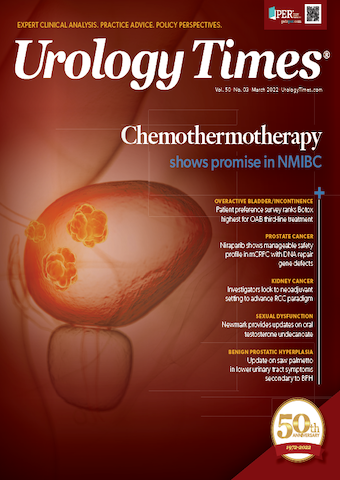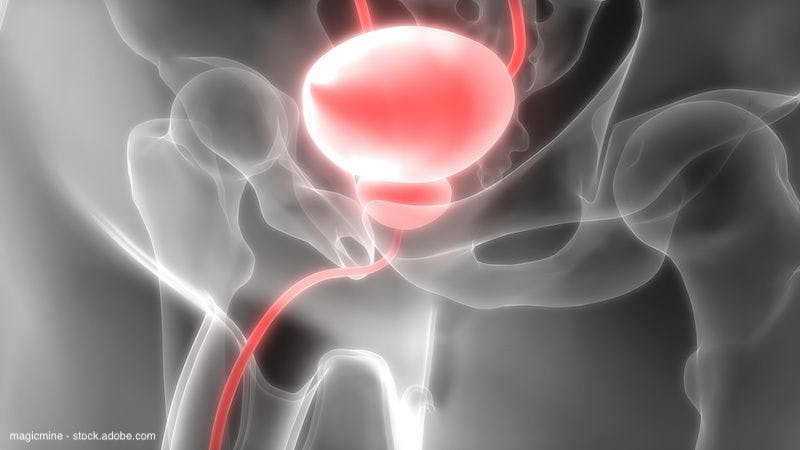Publication
Article
Urology Times Journal
Dr. Newmark provides updates on FDA-approved oral testosterone undecanoate
Author(s):
JATENZO is the first FDA-approved oral softgel formulation of testosterone undecanoate used to treat patients with a deficiency or absence of endogenous testosterone.
In a recent study presented at the 2021 Sexual Medicine Society of North America Fall Scientific Meeting, Jay Newmark, MD, MBA, and co-authors report promising findings on the first experiences of patients using JATENZO in the real world.1 Newmark is the Chief Medical Officer at Clarus Therapeutics, Northbrook, Illinois.
Please discuss the background for this study.
JATENZO is the first oral testosterone replacement therapy that's been approved by the FDA in over 40 years. The previous product, methyl testosterone, was known to cause hepatotoxicity, and therefore is almost never used today. JATENZO is formulated as a self-emulsifying drug delivery system and avoids the first pass effect through the liver. Owing to its unique mechanism of absorption, JATENZO does not cause hepatotoxicity. JATENZO comes in 3 softgel strengths and 5 dose options. We wondered, given the wide eugonadal range, which is generally accepted to be between 300 and 1000 ng/dL, is dose titration necessary or would a single-dose strength suffice? Our objectives were to assess the ability of any given dose of JATENZO without dose adjustment to restore testosterone to the eugonadal range at steady state, and then compare that to the real-world dose titration experience of patients treated with JATENZO. We accomplished this by performing pharmacokinetic [PK] simulations using a robust population PK model developed for testosterone in 474 hypogonadal men who were treated with oral TU in prior PK studies. Testosterone levels were simulated following oral twice daily dosing at steady state with no dose adjustments. For each dose strength, we calculated the average concentration over a 24-hour period and the percent of subjects within the eugonadal range. We compared this to prescription data to evaluate the frequency of real-world dose titration.
What were some of the notable findings of this study? Were any of them surprising to you or your co-authors?
We were surprised to see that the majority of subjects in these simulations had testosterone levels within the eugonadal range for all 3 dose strengths. These range from almost 61% for the 237 mg twice daily dose, up to 74% for the 396 mg twice daily dose, and these findings were consistent with some of our results in earlier phase 3 studies. In addition, mean testosterone levels increased by dose from 398 ng/dL for the 237 mg twice daily dose, up to 728 ng/dL for the 396 mg twice daily dose. When comparing this to prescription data, we found almost 40% of patients had changed their dose within the first 6 months.
How does this research build on previous studies of oral TU?
Well, in phase 3 studies, we found that over 87% of men were able to titrate their dose to the eugonadal range. This study expands on this by looking at dosing without titration and finds that the majority of men on any of 3 dose strengths were able to normalize testosterone levels without the need for titration.
What is the take-home message for the practicing urologist?
The treatment of male hypogonadism involves both normalizing testosterone levels as well as improving hypogonadal symptoms. Since any dose strength can normalize testosterone levels in most patients, having an option to titrate dose is likely necessary in order to optimize patient symptoms.
Reference
1. Dudley R, Newmark J, Stark S, et al. Real-World Experience with First FDA-Approved Oral Testosterone Undecanoate Formulation. Paper presented at: 2021 Sexual Medicine Society of North America Fall Scientific Meeting; October 21-24, 2021; Scottsdale, Arizona. Abstract #028

Newsletter
Stay current with the latest urology news and practice-changing insights — sign up now for the essential updates every urologist needs.
































